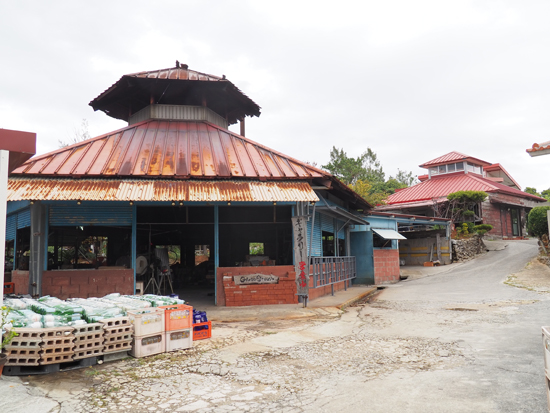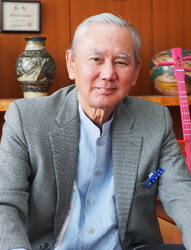Series ”Visiting the village” in search of the key to regional revitalization 10 Yomitan Village, Okinawa


石嶺傳實村長(Mayor Ishimine Village)
Yomitan Village is a village in central Okinawa Prefecture with a population of approximately 42,000 (as of January). It is known as the most populous village in Japan, and the population is still increasing. Current projections are that the number will reach 45,000 to 46,000 around 2045. It can be said that this village is extremely unusual, considering that many villages are suffering from drastic population decline.
When I asked Village Mayor Ishimine why the population is increasing, he cited a sense of love for his hometown. It is said that many people who leave their villages to pursue higher education or find jobs return after a while. Although no special measures have been taken, many people return to the area after getting married or having children, which is contributing to the population increase.
”The reason why a village has been maintained without becoming a town or city is due to the temperament of the villagers.Yomitan Village retains the original scenery of Okinawa. We are building a village where we can see our neighbors,” said Village Mayor Ishimine.
It is rich in nature, has a relaxing atmosphere, and has a convenient lifestyle. There are supermarkets, convenience stores, hospitals, schools, etc., making it an easy environment to raise children. These points may also be attractive and encourage people to migrate.
Although the population of Yomitan Village continues to increase, the population is also aging. For this reason, we will place emphasis on medical care, welfare, and nursing care, including comprehensive community care. Digitalization is the key here.
Yasuhiko Shiroma, head of the Yomitan Village Planning and Policy Division, said, ”Up until now, we have focused on information management within the agency, but now we are moving forward with initiatives that include the digitalization of the entire village, with the aim of creating a more livable village” .
The key point is to create a village that takes advantage of the original landscape, where Okinawan history and culture are rooted.
For example, traditional crafts such as pottery and textiles are still thriving in Yomitan Village, and the village has produced three Living National Treasures. Yachimun no Sato, located within the village, attracts many tourists as a sacred place where many pottery studios gather.
They will utilize digital technology to create villages that sustain this culture.
It also has high hopes for smart agriculture.
After the war, 95% of Yomitan Village’s land was occupied by US military bases. Currently, about 35% of the village’s area is occupied by US military bases, but the returned land is being used to improve social infrastructure and develop farmland.
Mayor Ishimine said, ”In terms of farmland development, we didn’t have water for agricultural use, so we built Nagahama Dam. Nagahama Dam is the largest agricultural dam in Okinawa, and the farmland in Yomitan Village is drought-free.Okinawa is in the path of typhoons. That’s why we are promoting the use of vinyl greenhouses and flat greenhouses.As a result, we now have farmland that is free from drought and typhoon damage”.
They are focusing on cultivating the core crops of sugarcane and purple sweet potatoes, as well as melons and mangoes.
It is said that the land readjustment of farmland is the most advanced in Okinawa Prefecture, making it suitable for smart agriculture.
”For example, even if GPS is used for automatic operation of agricultural machinery, it will be less likely to cause discrepancies and will be more effective because the divisions are neat” (Mr. Shiroma).
Yomitan Village is expected to have a population increase for a while, but after that it will face a population decline. The government is already considering measures to limit the population decline to a slight decline.
One is to revitalize the relevant population, and currently we are focusing on workation.
They have set up a workation facility “Howlive” in Cape Zanpa, Okinawa’s leading resort area. Approximately 40 companies in metropolitan areas such as Tokyo and Osaka are using it. Apparently some people come here on a workday and then move on.
Regarding the exchange population, they will focus on tourism, sporting events, and convention business.
”Tourism has traditionally been centered around people from East Asia, but now it is shifting to people from Southeast Asia.From now on, we will also appeal to people from Europe and Oceania.Europeans in particular are more environmentally conscious. It’s expensive and people can expect to stay for a long time as a vacation, so we want to actively promote this” ,says Shiroma.
The challenge facing digitalization is the lack of digital human resources.
”There are few human resources in the command center within the city hall.Digital human resources are indispensable to discuss the overall vision, so we would like to cover this by collaborating with private companies,” says Shiroma.
